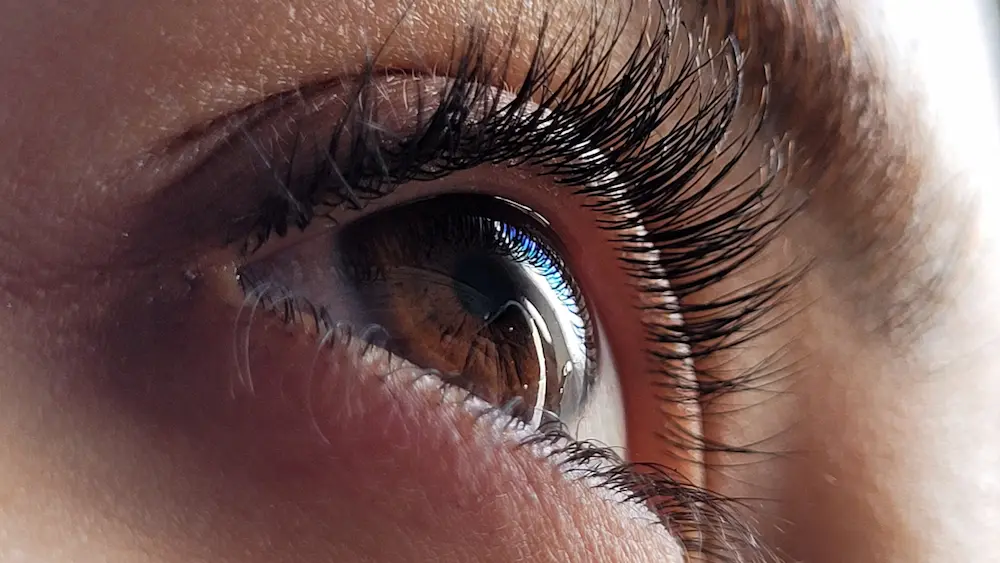
Coaching & Counselling
- Holistic Health Coaching
- Hypnotherapy
- Neuro Linguistic Programming (NLP)
- Emotional Freedom Technique (EFT)
- Holistic Counselling
- Wellness Coaching
- Transpersonal Counselling
- Youth Mentoring
- Highly Sensitive Person (HSP) Coaching
- Life Coaching
- Eye Movement Desensitization and Reprocessing therapy (EMDR)
- End of Life Doula
- Emotion Release Technique (ERT)
- Neurofeedback
- Neuroaffective Touch Therapy
- Somatic Coaching
- Neuro Transformation Therapy (NTT)
- Rapid Transformational Therapy (RTT)
- Multichannel Eye Movement Integration (MEMI)
- Aaruka® Therapy
- Self Directed Healing
- Psych-K
Multichannel Eye Movement Integration (MEMI)

Multichannel Eye Movement Integration (MEMI): A Complete Guide to This New Trauma Therapy
In November 2023, something caught my attention at a trauma therapy conference. A method called Multichannel Eye Movement Integration, or MEMI, that looked almost too simple to work. Yet here I am, nearly a year later, watching clients recover from decades-old trauma in single sessions.
I was part of Australia's first MEMI cohort, trained directly by Dr. Mike Deninger, the method's creator, and Joachim Lee, the principal trainer for Asia. What started as professional curiosity has become one of the most effective tools in my practice.
This guide covers everything you need to know about MEMI, from how it works to what makes it different from other trauma therapies.
What is MEMI exactly?
MEMI stands for Multichannel Eye Movement Integration. It's a brain-based therapy that helps people process traumatic memories without having to relive them or tell their story in detail.
The therapist guides you through specific eye movements in multiple directions while you think about the traumatic event. Your brain does the rest of the work, naturally reorganising how the memory is stored and accessed.
Think of it like defragmenting a computer hard drive. The information stays there, but it gets filed away properly so it doesn't crash your system anymore.
How does MEMI actually work?
MEMI draws from neurolinguistic programming principles and targets how your brain stores traumatic memories. When something terrible happens, your brain often stores it wrong. The memory gets stuck in your nervous system, replaying with all the original intensity.
During MEMI, you move your eyes in structured patterns across your entire visual field. This activates different parts of your brain simultaneously. Meanwhile, you're thinking about the trauma, but from a safe distance.
The eye movements help your limbic system calm down. Your brain can finally process and file the memory properly. What once felt overwhelming becomes just another memory you can access without falling apart.
The process targets three types of trauma responses: what you see (visual), what you feel emotionally, and what you feel in your body (visceral). Most trauma therapies only hit one or two of these areas.
What makes MEMI different from EMDR?
EMDR gets most of the attention when people talk about eye movement therapy. But MEMI offers several key advantages that make it genuinely different, not just another version of the same thing.
Eye movement patterns: EMDR uses back-and-forth movements, like watching a tennis match. MEMI uses multidirectional patterns that engage your entire visual field. It's more like following a complex dance than a simple pendulum.
No story required: This is huge. EMDR typically requires you to describe your trauma in detail. MEMI doesn't. You think about what happened, but you don't have to put it into words or share details that feel too raw.
Body-first approach: MEMI focuses heavily on what you feel in your body during and after the trauma. Many clients find this less overwhelming than diving straight into emotional processing.
Strategic prompts: MEMI therapists use specific verbal cues designed to help your nervous system down-regulate. These aren't random encouraging statements, they're carefully chosen phrases that support your brain's natural healing process.
Cognitive healing happens automatically: Here's something remarkable. MEMI doesn't directly target the negative thoughts that often accompany trauma. Instead, these distorted beliefs tend to resolve on their own once the sensory and physical reactions calm down.
What happens during a MEMI session?
First, we talk. I need to understand what you're dealing with, but you won't have to tell me every detail of what happened. We're more interested in how the trauma shows up in your life now than getting a blow-by-blow account.
MEMI includes three specific safety mechanisms before we start any processing. I can't detail all of them here, but they ensure you feel grounded and in control throughout the session.
You'll sit comfortably while I guide your eyes through various movement patterns. You'll be thinking about the traumatic event, but in a contained way. Most people find this surprisingly manageable, even with severe trauma.
The session typically lasts 60 to 90 minutes. Some people need only one session, others benefit from two or three. It depends on the complexity of your trauma and how your particular nervous system responds.
What can MEMI help with?
I've used MEMI successfully for childhood sexual abuse, physical abuse, car accidents, medical trauma, war trauma, and assault. Age doesn't seem to matter much. I've helped people process trauma from last month and trauma from 50 years ago.
MEMI works well for single-incident trauma and complex trauma patterns. It's particularly effective when people feel stuck, like they've tried talk therapy but can't seem to move past certain experiences.
The method also helps with trauma symptoms that show up in your body: panic attacks, hypervigilance, sleep problems, chronic pain that doesn't have a clear medical cause.
Who shouldn't try MEMI?
MEMI isn't appropriate for everyone. If you're currently in active psychosis or have certain neurological conditions, this method might not be suitable.
People with severe dissociative disorders need careful evaluation before starting MEMI. The therapy can be intense, even though it feels gentle.
If you're currently using substances to cope with trauma, you'll likely need to address that first. MEMI works best when your nervous system can fully participate in the process.
What does the research say?
Dr. Deninger has documented extensive clinical experience with MEMI, though large-scale controlled studies are still needed. This is common with newer therapeutic approaches.
The eye movement research supporting EMDR also applies to MEMI, since both methods use similar neurological pathways. The difference is that MEMI appears to access these pathways more comprehensively.
What I can tell you is what I see in my practice. The results often surprise both me and my clients. People who've carried trauma for decades find relief faster than either of us expected.
How quickly does MEMI work?
This varies dramatically between people. Some clients notice significant shifts during their first session. Others need a few sessions to fully process more complex trauma.
What's consistent is that MEMI tends to work faster than traditional talk therapy for trauma processing. Instead of months or years, we're often talking about weeks.
The changes also tend to stick. I've followed up with clients months later, and the improvements they experienced during MEMI sessions have generally maintained or even continued to develop.
Can MEMI work alongside other therapies?
Absolutely. MEMI integrates well with other trauma-informed approaches. Many clients continue with regular therapy while using MEMI to process specific traumatic memories.
It also works well with somatic therapies, since MEMI already focuses heavily on body sensations. Some people find yoga, massage, or bodywork particularly helpful alongside MEMI.
MEMI can complement medication-assisted treatment too, though you should always consult with your prescribing doctor about any therapy changes.
How do you find a qualified MEMI practitioner?
MEMI is still relatively new, especially in Australia. Look for practitioners who've been trained directly by Dr. Deninger or certified MEMI trainers.
Ask potential practitioners about their specific MEMI training, not just general trauma therapy credentials. The method has specific protocols that require proper training to implement safely.
Since there are still few MEMI practitioners, you might need to travel or consider telehealth sessions, depending on where you live.
What should you expect from MEMI?
Most people find MEMI gentler than they anticipated. You might feel emotional during or after sessions, but it's usually manageable emotion, not overwhelming retraumatization.
Some clients experience physical sensations as their nervous system releases stored trauma. This might include temporary fatigue, muscle tension, or vivid dreams. These responses typically resolve within a day or two.
The goal isn't to erase your memories or pretend trauma didn't happen. Instead, MEMI helps those memories lose their grip on your daily life. You remember what happened, but it no longer controls how you feel or react.
MEMI represents a genuine shift in how we approach trauma therapy. Instead of spending months talking about what happened, we can often resolve the nervous system's response to trauma quickly and effectively. For many people who've felt stuck in traditional therapy, it offers a new path forward.
This guide was written by Aneta Zydzik Plucinska, if you’d like more information and/or discuss if MEMI is right for you, you can book a free discovery call with her here.
Resources: Deninger, Mike, PhD. Multichannel Eye Movement Integration: The Brain Science Path to Easy and Effective PTSD Treatment. Gracie Publishing. 2021
"MEMI is unmatched in its combination of simplicity, clarity, brevity, and rapid effectiveness in trauma treatment."
Dr. Mike Deninger
Discover our vetted practitioners





